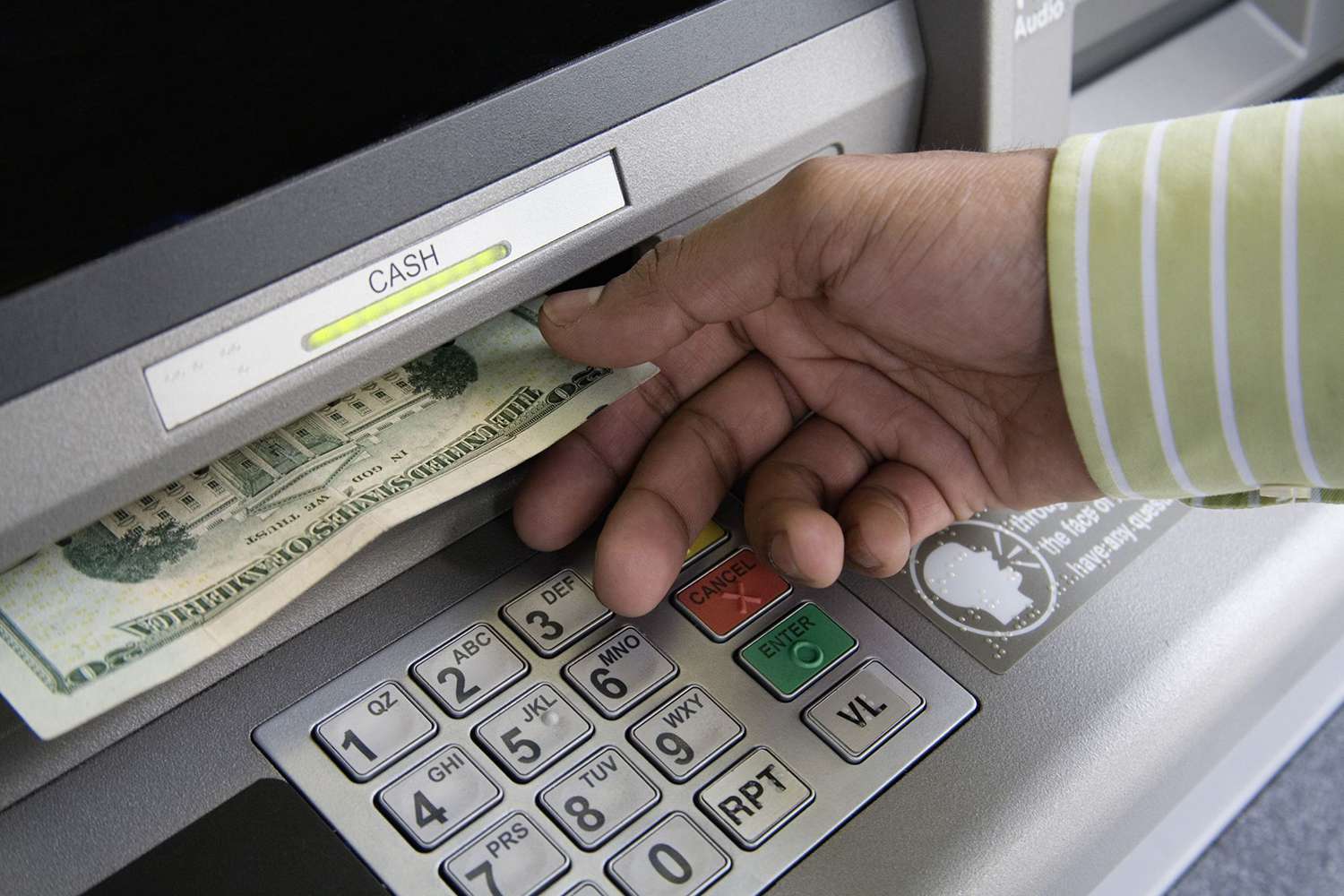

Finance
What Does M Mean On A Credit Report
Published: October 21, 2023
Discover what the "M" stands for on a credit report and gain insight into your financial status. Explore the significance of this notation in your overall credit score and lending abilities.
(Many of the links in this article redirect to a specific reviewed product. Your purchase of these products through affiliate links helps to generate commission for LiveWell, at no extra cost. Learn more)
Table of Contents
- Introduction
- Understanding Credit Reports
- Components of a Credit Report
- The Importance of Credit Scores
- Factors Impacting Credit Scores
- What is the “M” Code?
- Meaning and Implications of “M” on a Credit Report
- Possible Reasons for the “M” Code
- How to Address the “M” Code
- Steps to Improve Credit Standing
- Frequently Asked Questions (FAQs)
- Conclusion
Introduction
Having a good understanding of your credit report is crucial when it comes to managing your financial health. Your credit report is a detailed record of your credit history and provides valuable information to lenders, landlords, and potential employers.
One of the factors that can have a significant impact on your credit report is the “M” code. If you’ve ever taken a close look at your credit report and noticed this mysterious letter next to one of your accounts, you may be wondering what it means and how it affects your overall credit standing.
In this article, we will delve into the meaning and implications of the “M” code on a credit report, as well as explore the possible reasons behind it. Additionally, we will provide insights on how to address the “M” code and offer steps you can take to improve your credit standing.
Understanding the “M” code is essential for anyone who wants to maintain a healthy credit profile and make informed financial decisions, so let’s dive in!
Understanding Credit Reports
A credit report is a comprehensive record of your credit history. It includes information such as your personal details, credit accounts, payment history, outstanding debts, and inquiries made by lenders or companies who have requested your credit report.
Understanding your credit report is crucial because it directly impacts your credit score, which plays a significant role in determining your creditworthiness. Lenders, landlords, and employers often rely on credit reports to assess an individual’s financial responsibility and trustworthiness.
When you apply for credit, such as a loan or credit card, the lender reviews your credit report to evaluate your credit risk. A positive credit report indicates that you have a history of paying your bills on time and managing your credit responsibly, making you a more desirable candidate for credit.
On the other hand, a negative credit report, filled with late payments, collections, or bankruptcies, can make it challenging to obtain credit or lead to higher interest rates and unfavorable terms when borrowing.
To keep track of your credit health, it’s important to regularly review your credit report from the three major credit reporting bureaus: Experian, Equifax, and TransUnion. You are entitled to a free copy of your credit report from each of these bureaus annually, which you can request through AnnualCreditReport.com.
By understanding the components of a credit report and the factors that can impact it, you’ll be better equipped to manage your credit effectively and make informed financial decisions.
Components of a Credit Report
A credit report is a comprehensive document that contains various components providing a detailed overview of an individual’s credit history. Understanding these components is essential for interpreting your credit report accurately. Here are the key components you’ll find on a typical credit report:
- Personal Information: This section includes your name, date of birth, current and previous addresses, Social Security number, and employment history. It is important to ensure that the information listed here is accurate and up to date.
- Account Information: This section outlines all your credit accounts, such as loans, credit cards, mortgages, and lines of credit. It includes details like the creditor’s name, account number, credit limit or loan amount, balance, and payment history.
- Payment History: This portion of your credit report summarizes your past payment behavior. It shows whether you have made payments on time or if there have been late or missed payments. Payment history is a significant factor in determining your credit score.
- Credit Inquiries: This section includes a list of companies or lenders that have requested your credit report. There are two types of inquiries: hard inquiries, made by potential lenders when you apply for credit, and soft inquiries, made by yourself or companies for informational purposes.
- Public Records: This part of the credit report includes information related to bankruptcies, tax liens, court judgments, and other financial obligations. Negative public records can significantly impact your credit score.
- Collections: If you have any past due accounts that have been sent to collections, they will be listed in this section. It is crucial to address these accounts as they can have a detrimental effect on your creditworthiness.
- Credit Score: Although not necessarily a component of the credit report itself, many credit reports include a summary of your credit score. The credit score is a numerical representation of your creditworthiness, often ranging from 300 to 850, and is a reflection of various factors within your credit report.
By understanding the different components of your credit report, you can gain valuable insights into your financial history and identify areas that may need improvement. Monitoring these components regularly allows you to take proactive steps in managing and improving your credit standing.
The Importance of Credit Scores
Credit scores play a vital role in various aspects of our financial lives. They provide lenders, landlords, and even employers with a snapshot of our creditworthiness and financial responsibility. Understanding the importance of credit scores can empower individuals to take steps to maintain or improve their credit standing. Here are a few key reasons why credit scores are essential:
- Creditworthiness: Your credit score is a reflection of your creditworthiness, indicating how likely you are to repay borrowed money. Lenders rely on credit scores to assess the level of risk associated with lending you money. A high credit score demonstrates that you have a history of responsible borrowing and are more likely to repay your debts on time, making you an attractive candidate for credit.
- Interest Rates: Your credit score directly impacts the interest rates you receive on loans and credit cards. A higher credit score typically results in more favorable terms and lower interest rates, potentially saving you thousands of dollars over the life of a loan.
- Access to Credit: A good credit score can increase your ability to access credit. It opens doors to a wider range of loan options, credit cards, and favorable terms. Conversely, a low credit score can limit your options and make it harder to secure credit when needed.
- Insurance Premiums: In some cases, insurance companies use credit scores to determine the premiums for auto, home, or renters insurance. A poor credit score may result in higher insurance premiums or difficulty obtaining coverage.
- Rental Applications: Landlords often use credit scores when evaluating rental applications. A higher credit score can give you a competitive edge and increase the likelihood of securing the rental property you desire.
- Employment Opportunities: Certain employers may check credit scores as part of their hiring process, especially for positions that involve financial responsibility or access to sensitive financial information.
As you can see, credit scores have a significant impact on your financial life. It is important to monitor your credit score regularly and take steps to improve it if needed. By maintaining a good credit score, you can enjoy better interest rates, easier access to credit, and greater financial opportunities.
Factors Impacting Credit Scores
Your credit score is a numerical representation of your creditworthiness, and it is calculated based on several factors. Understanding these factors can help you make informed decisions to maintain or improve your credit score. Here are the key factors that impact credit scores:
- Payment History: Arguably the most critical factor, your payment history accounts for about 35% of your credit score. It reflects whether you have made payments on time, had late payments, or experienced any accounts in collections or bankruptcies.
- Credit Utilization Ratio: This factor makes up around 30% of your credit score and refers to the amount of available credit you are using. It is calculated by dividing your total credit card balances by your total credit limits. Keeping your credit utilization ratio below 30% is recommended for maintaining a healthy credit score.
- Length of Credit History: The length of time you have had credit accounts for about 15% of your credit score. Generally, the longer your credit history, the more positively it impacts your credit score. It demonstrates your ability to manage credit over an extended period.
- Credit Mix: The types of credit you have, such as credit cards, loans, and mortgages, account for around 10% of your credit score. A diverse credit mix can be viewed positively by lenders, showing your ability to handle different types of credit responsibly.
- New Credit: This factor makes up about 10% of your credit score and considers recent credit inquiries, new accounts opened, and any negative impacts on your credit due to multiple applications for credit.
It’s important to note that these percentages are approximate and can vary based on individual credit scoring models. Additionally, other factors, such as public records, tax liens, and collections, can also impact your credit score negatively.
Monitoring these factors and understanding their impact can help you prioritize actions to improve your credit score. Consistently making payments on time, keeping credit card balances low, and maintaining a healthy credit mix can contribute to a higher credit score over time.
Remember, improving your credit score is a gradual process, and it requires discipline and responsible financial habits. Making positive changes today can lead to significant benefits in the long run, including better interest rates, increased access to credit, and greater financial opportunities.
What is the “M” Code?
If you’ve ever reviewed your credit report and noticed the letter “M” next to one of your accounts, you may be wondering what it signifies. The “M” code on a credit report refers to a specific status assigned to an account. It stands for “Matured/Account Closed” or “R9” in the credit reporting industry.
When an account reaches its maturity date or is closed, it receives the “M” code. The maturity date refers to the end of a term loan or the completion of a payment plan, such as a mortgage or car loan. After making the final payment or fulfilling your obligations, the account is closed, and the status is updated to “M” on your credit report.
Keep in mind that the “M” code should not be confused with the “M” code used for missed payments or accounts in collections, which typically indicates a negative status related to payment delinquency.
Understanding the “M” code is important as it gives you a clear indication that the account has reached its completion and is no longer an active obligation. This information is valuable for monitoring your credit report and maintaining an accurate record of your financial history.
Meaning and Implications of “M” on a Credit Report
The “M” code on a credit report, indicating that an account has matured or been closed, carries specific meanings and implications for your credit history. Here’s what it signifies and how it can affect your overall credit standing:
Account Completion: When you see the “M” code next to an account, it means that you have successfully paid off or completed your financial obligations for that particular loan or payment plan. This includes mortgages, car loans, student loans, or any other installment loans with a predetermined term length.
Positive Impact on Credit Score: Having a “Matured/Account Closed” status generally has a positive impact on your credit score. It demonstrates that you have met your financial commitments and successfully managed your debts. As a result, it can contribute to a positive credit history and potentially improve your creditworthiness.
Credit History Length: The closure of an account with the “M” code can also affect the length of your credit history. If the closed account is one of your oldest accounts, its closure may shorten your overall credit history length. This could potentially have a minor negative impact on your credit score, as a longer credit history is often considered more favorable. However, other factors such as timely payments and a well-managed credit profile can mitigate this impact.
Affected Credit Utilization Ratio: Closing an account can also impact your credit utilization ratio, which is the amount of available credit you are using. If the account being closed had a high credit limit or a substantial balance, its closure could increase your overall credit utilization ratio and potentially have a negative impact on your credit score. It is important to be mindful of your credit utilization ratio and strive to keep it low, even with the closure of accounts.
Long-Term Credit Management: The “M” code on a credit report reflects your ability to effectively manage your credit over time. It showcases your commitment to fulfilling your financial obligations and can be viewed positively by lenders when they assess your creditworthiness for future loan applications or credit extensions.
Overall, the “M” code on a credit report represents the successful completion of a loan or payment plan. While it generally carries positive implications for your credit history, it’s crucial to continue practicing responsible credit management to maintain a healthy credit profile and enhance your financial opportunities in the future.
Possible Reasons for the “M” Code
The “M” code, indicating that an account has matured or been closed, can have various reasons behind it. Understanding these reasons can provide insights into why the “M” code appears on your credit report. Here are some possible causes for the “M” code:
- Loan or Payment Plan Completion: The most common reason for the “M” code is the completion of a loan or payment plan. When you make the final payment on a term loan, such as a mortgage or car loan, the account is considered matured and closed. It signifies that you have fulfilled your financial obligations according to the agreed terms.
- Refinancing or Consolidation: In some cases, the “M” code may appear when you refinance a loan or consolidate multiple loans into a new one. When you refinance, the original loan is closed, and a new loan is opened to pay off the old debt. This process can result in the “M” code for the closed account.
- Credit Card Closure: If you voluntarily close a credit card account, it will receive the “M” code on your credit report. This could be due to various reasons, such as simplifying your credit card portfolio, reducing credit card fees, or managing your credit utilization ratio.
- Account Inactivity: In some cases, creditors may close an account due to prolonged inactivity. If you haven’t used a credit account for an extended period, the creditor may decide to close the account. This can result in the “M” code on your credit report.
- Non-Repayment or Default: In rare cases, the “M” code may indicate non-repayment or default on a loan. If you have consistently missed payments or failed to fulfill your obligations, the lender or creditor may deem the account as closed and assign the “M” code, indicating a negative credit status.
It’s important to review your credit report regularly to understand why specific accounts have received the “M” code. If you believe there is an error or discrepancy, you can contact the credit reporting agencies to investigate and rectify any inaccuracies.
Remember, the “M” code is typically associated with completed accounts and is generally considered a positive status. However, it’s essential to continue practicing responsible credit management and maintaining a healthy credit profile to ensure a positive impact on your credit history.
How to Address the “M” Code
If you have noticed the “M” code on your credit report and want to address it, there are a few steps you can take to ensure that it accurately reflects your financial history and does not negatively impact your credit standing. Here’s how to address the “M” code:
- Review your Credit Report: Start by reviewing your credit report in detail and verify the accuracy of the “M” code. Check if the account in question has indeed matured or been closed according to your records. If you believe there is an error or discrepancy, gather any supporting documentation to prove your case.
- Dispute Inaccurate Information: If you find any inaccuracies or discrepancies related to the “M” code, you can dispute them with the credit reporting agencies. File a dispute stating the specific error and provide supporting documentation to back up your claim. The credit reporting agencies will investigate the dispute and make corrections if necessary.
- Address Negative Items: If the “M” code is associated with negative information, such as non-repayment or default on a loan, it’s crucial to address the underlying issue. Consider contacting the creditor to discuss potential solutions, such as repayment plans or financial arrangements. Resolving any outstanding debts or delinquencies can help improve your credit standing over time.
- Continued Responsibly Credit Management: Moving forward, maintain responsible credit management habits to build a positive credit history. Pay your bills on time, keep your credit utilization ratio low, and avoid taking on more debt than you can comfortably handle. Consistency in practicing good financial habits can help improve your overall credit profile.
- Monitor Your Credit Regularly: After addressing the “M” code, continue to monitor your credit report regularly. Check for any changes, new accounts, or inaccuracies that may arise. Regular monitoring allows you to stay on top of your credit status and take immediate action if any issues arise.
Addressing the “M” code on your credit report requires proactive steps to ensure its accuracy and minimize any negative impacts. By reviewing your credit report, disputing inaccuracies, addressing negative items, and maintaining responsible credit management, you can take control of your creditworthiness and work towards building a positive financial outlook.
Steps to Improve Credit Standing
If you’re looking to improve your credit standing, taking proactive steps can help you build a positive credit history and increase your creditworthiness. Here are some essential steps to consider:
- Review your Credit Report: Start by obtaining a copy of your credit report from each of the major credit reporting agencies. Review it thoroughly for any errors or inaccuracies that may be affecting your credit score.
- Dispute Errors: If you find any errors or discrepancies on your credit report, file a dispute with the credit reporting agencies. Provide supporting documentation to back up your claim and request corrections to be made.
- Pay Bills on Time: Consistently paying your bills on time is crucial for maintaining a positive credit profile. Late payments can have a significant negative impact on your credit score. Set up reminders or automatic payments to ensure timely payments.
- Reduce Credit Card Balances: High credit card balances can negatively impact your credit utilization ratio, which is the amount of available credit you are using. Aim to keep your balances below 30% of your credit limits. Paying down your credit card debt can also save you money on interest charges.
- Avoid Opening Unnecessary Credit: While it’s important to have a diverse credit mix, avoid opening unnecessary lines of credit. Each new credit application can result in a hard inquiry, which can temporarily lower your credit score.
- Manage Debt Responsibly: If you have existing debts, create a realistic plan to manage and reduce them. Prioritize paying off high-interest debts first while making minimum payments on other accounts.
- Keep Old Accounts Open: Unless there are specific reasons to close them, keep old accounts open. Older accounts with a positive payment history can demonstrate your long-term track record of responsible credit management.
- Limit Credit Applications: Be mindful of the number of credit applications you submit. Frequent applications for new credit can raise concerns for lenders and negatively impact your credit score.
- Seek Professional Guidance if Needed: If you feel overwhelmed or unsure of how to improve your credit standing, consider seeking guidance from a certified credit counselor or financial advisor who can provide personalized advice and assistance.
Improving your credit standing takes time, patience, and consistent efforts to demonstrate responsible financial behavior. By following these steps, you’ll be on your way to establishing a solid credit foundation and increasing your chances of qualifying for better interest rates, loans, and other financial opportunities.
Frequently Asked Questions (FAQs)
Here are some frequently asked questions about credit reports and the “M” code:
- What is the purpose of a credit report?
A credit report provides a detailed record of an individual’s credit history, including their payment history, credit accounts, inquiries, and public records. It is used by lenders, landlords, and employers to assess creditworthiness and make informed decisions. - What does the “M” code on a credit report mean?
The “M” code indicates that an account has matured or been closed. It typically appears when you complete payments on a loan or close a credit account. The “M” code signifies a positive status for the specific account. - Does the “M” code impact my credit score?
The “M” code generally does not have a negative impact on your credit score. It often reflects a successfully completed loan or payment plan, which can contribute positively to your credit history. However, other factors such as credit utilization and payment history still play a significant role in determining your overall credit score. - Can I remove the “M” code from my credit report?
If the “M” code correctly reflects the closure or completion of an account, it cannot be removed from your credit report. However, it is essential to review your credit report for accuracy and dispute any errors that may appear alongside the “M” code. - Can the “M” code reappear after an account is closed?
Once an account is closed and the “M” code appears on your credit report, it generally remains there. However, if there are errors associated with the closure or the account status changes in the future, it’s crucial to monitor your credit report and take appropriate actions to address any discrepancies. - How long does the “M” code stay on a credit report?
The “M” code typically remains on your credit report for several years, depending on the credit reporting agencies’ policies. Positive account information can stay on your credit report for up to 10 years, while negative information is generally removed after 7 years.
Remember, it’s important to regularly review your credit report for accuracy, understand the information included, and take action if you identify any errors or discrepancies. Building and maintaining a strong credit profile requires responsible financial habits and consistent monitoring of your credit history.
Conclusion
Understanding your credit report and the significance of the “M” code is crucial for maintaining a healthy credit standing. Your credit report serves as a comprehensive record of your credit history and is used by lenders, landlords, and employers to assess your creditworthiness and financial responsibility.
The “M” code on a credit report indicates that an account has matured or been closed, usually due to successful completion of a loan or payment plan. While the “M” code itself generally carries positive implications, it’s important to continue practicing responsible credit management to maintain a strong credit profile.
By monitoring your credit report regularly, disputing any inaccuracies, paying bills on time, keeping credit card balances low, and managing your debts responsibly, you can take control of your credit standing. These actions will help improve your credit score over time and open doors to better interest rates, increased access to credit, and greater financial opportunities.
Remember, building a positive credit history and maintaining a healthy credit profile require consistent effort, discipline, and informed decision-making. By following the steps outlined in this article and staying proactive in managing your credit, you can pave the way towards a brighter financial future.














